Table of Contents
- Harness Natural Ventilation
- Cross-Ventilation
- Night Ventilation
- Block Out the Sun
- Curtains and Blinds
- Window Films
- Stay Hydrated and Cool
- Stay Hydrated
- Use Fans
- Embrace Energy-Efficient Cooking
- Grilling
- Microwave or Slow Cooker
- Limit Heat-Producing Activities
- Cooking
- Appliance Use
- Optimize Your Ceiling Fans
- Fan Direction
- Create a Cooling Oasis
As summer’s scorching temperatures approach, the temptation to crank up the air conditioner may seem irresistible. While air conditioning provides welcome relief from the heat, overusing it can strain your wallet and the environment. Fortunately, there are effective ways to stay cool without relying solely on AC. In this article, we’ll explore strategies for beating the heat while conserving energy and embracing a more sustainable approach to cooling.
As summer’s scorching temperatures approach, the temptation to crank up the air conditioner may seem irresistible. While air conditioning provides welcome relief from the heat, overusing it can strain your wallet and the environment. Fortunately, there are effective ways to stay cool without relying solely on AC. In this article, we’ll explore strategies for beating the heat while conserving energy and embracing a more sustainable approach to cooling.
Harness the Power of Nature: Consider utilizing natural cooling methods like shading your windows with curtains or blinds during the hottest parts of the day. Planting shade-providing trees and installing reflective roofing can also help reduce indoor temperatures without electricity.
Upgrade Your Home’s Insulation: Proper insulation not only keeps your home warm in the winter but also cool in the summer. Ensuring your home is well-insulated can significantly reduce the need for air conditioning by maintaining a more stable indoor temperature.
Optimize Your Thermostat: Set your thermostat to a slightly higher temperature during the day when you’re away and lower it when you’re home. A programmable thermostat can make this process easier, ensuring you’re not cooling an empty house.
Use Fans Wisely: Ceiling fans and box fans can make you feel cooler even at higher temperatures by promoting air circulation. When using air conditioning, running fans concurrently can allow you to raise the thermostat a few degrees without sacrificing comfort.
Seal Leaks and Ducts: Ensure that your home’s doors and windows are properly sealed to prevent cool air from escaping and warm air from infiltrating. Additionally, have your HVAC system’s ductwork inspected for leaks, which can lead to energy waste.
Embrace Smart Technology: Invest in smart home technology that allows you to control your cooling system remotely. This way, you can adjust the temperature according to your schedule and preferences, even when you’re not at home.
Practice Heat-Efficient Cooking: Avoid using heat-producing appliances like ovens during the hottest parts of the day. Opt for cooking methods that generate less heat, such as grilling, slow cooking or using a microwave.
Stay Hydrated and Dress Smart: Staying cool isn’t just about your home’s temperature. Drink plenty of water to stay hydrated and choose lightweight, breathable clothing that helps regulate your body temperature.
Take Advantage of Cool Nights: Use the cooler nighttime temperatures to your advantage by opening windows and allowing fresh air to circulate through your home. This can help bring down indoor temperatures without relying on AC.
Consider Alternative Cooling Systems: Explore alternative cooling solutions such as evaporative coolers or heat pumps that use less electricity than traditional air conditioners while providing effective cooling.
By implementing these strategies, you can enjoy a comfortable living environment during the summer months while reducing your energy consumption and environmental impact. Cooling your home sustainably not only benefits your wallet but also contributes to a greener and more eco-friendly future.
To expand your knowledge on this subject, make sure to read on at this location: Efficient Home Cooling With Andes Roofing: Expert Strategies
Harness Natural Ventilation
One of the simplest and most effective ways to cool your home without AC is by harnessing natural ventilation:
“One of the simplest and most effective ways to cool your home without AC is by harnessing natural ventilation, a time-tested method that offers numerous benefits for your comfort, well-being and sustainability efforts. Here’s how embracing natural ventilation can transform your living space:
Energy Efficiency: Natural ventilation relies on the movement of fresh outdoor air through your home via open windows, doors and strategically placed vents. By letting nature do the work, you significantly reduce your reliance on energy-intensive air conditioning systems, leading to lower electricity bills and reduced greenhouse gas emissions.
Improved Indoor Air Quality: Opening windows and doors to allow fresh air in helps expel indoor pollutants, such as dust, odors and airborne toxins. This influx of clean air enhances indoor air quality, creating a healthier living environment for you and your family.
Temperature Regulation: Natural ventilation helps moderate indoor temperatures by exchanging warm indoor air for cooler outdoor air. It’s particularly effective during the evening and early morning when outdoor temperatures are lower. This process keeps your home comfortable without the need for mechanical cooling.
Cost Savings: Implementing natural ventilation is a cost-effective cooling solution that requires no additional equipment or electricity. It’s a budget-friendly way to achieve thermal comfort while reducing your environmental footprint.
Sustainable Living: Embracing natural ventilation aligns with sustainable living practices, as it reduces your carbon footprint and contributes to a more eco-friendly lifestyle. By conserving energy and resources, you play a role in preserving the planet for future generations.
Passive Cooling Design: Natural ventilation is a fundamental component of passive cooling design principles used in eco-conscious architecture. When incorporated into your home’s design, it can optimize its effectiveness and minimize the need for energy-intensive cooling systems.
Seasonal Adaptability: Natural ventilation is versatile and can be adjusted to suit different seasons and weather conditions. During cooler months, you can still use it to refresh your indoor air and reduce heating costs.
Connection to Nature: Opening windows and letting in the breeze connects you to the natural world outside. You can enjoy the gentle sounds of birdsong, the rustling of leaves and the invigorating feeling of fresh air, all while maintaining a comfortable indoor temperature.
Health Benefits: Natural ventilation not only promotes physical well-being through improved air quality but also supports mental health by fostering a closer connection to nature and a sense of harmony within your living space.
To maximize the benefits of natural ventilation, consider your home’s layout, window placement and prevailing wind direction. Use window screens to keep insects out while letting the breeze in and explore various ventilation strategies such as cross-ventilation and stack ventilation.
By embracing the power of natural ventilation, you not only create a more comfortable and healthy living environment but also contribute to a greener and more sustainable future for yourself and the planet.”
Explore this link for a more extensive examination of the topic: A BOATER’S GUIDE TO THE FEDERAL REQUIREMENTS FOR …
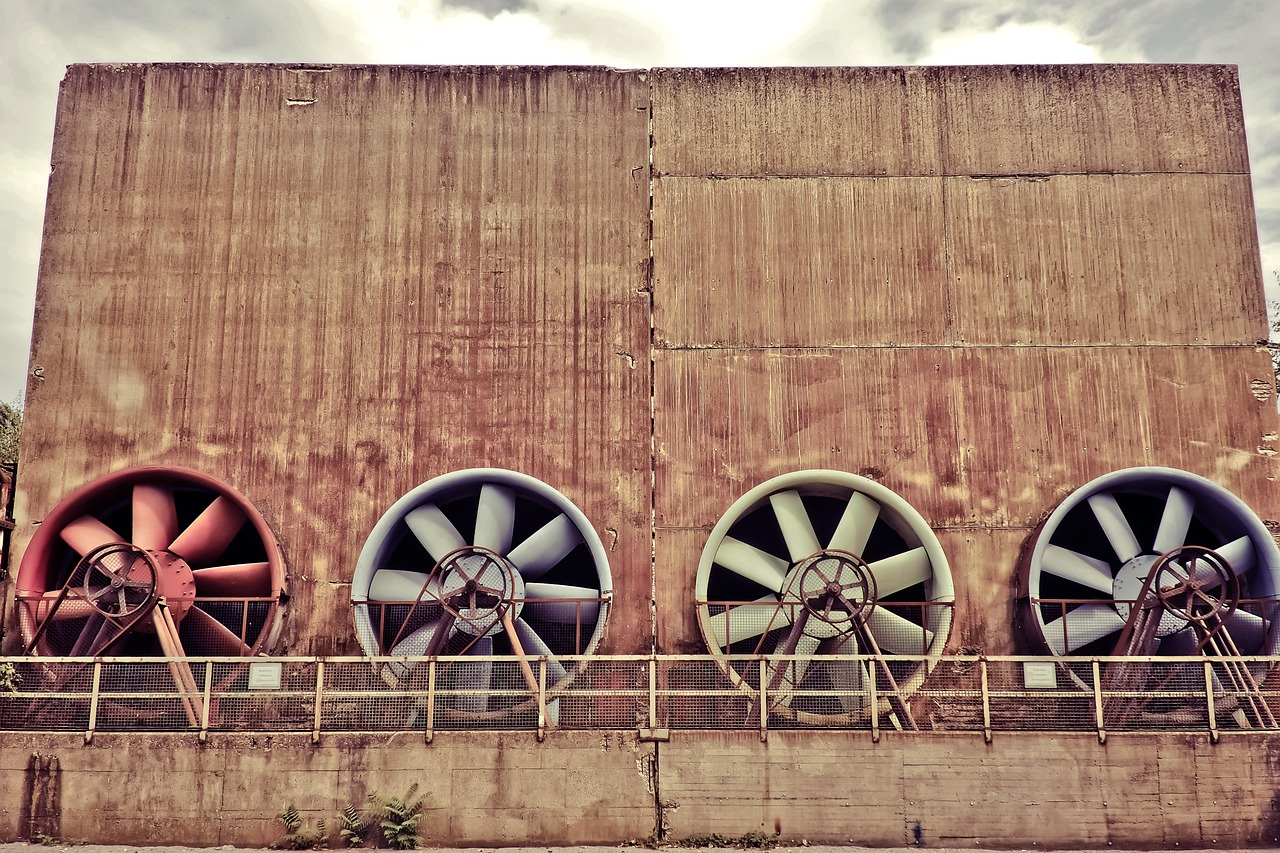
Cross-Ventilation
Open windows on opposite sides of your home to create a cross-breeze. This allows fresh air to flow through and carry away heat.
Creating a cross-breeze by opening windows on opposite sides of your home is a simple yet effective way to naturally ventilate your living space and it goes beyond just cooling. Here’s why harnessing this airflow can enhance your indoor environment:
Improved Air Circulation: Cross-ventilation enhances overall air circulation within your home. It helps prevent stagnant pockets of air, reducing the feeling of stuffiness and ensuring that every corner of your living space receives fresh, oxygen-rich air.
Moisture Control: Proper airflow plays a crucial role in moisture management. By allowing air to flow freely, you can help prevent the buildup of excess humidity, which can lead to issues like mold and mildew. This is particularly important in areas prone to high humidity.
Odor Dispersion: Cross-ventilation can quickly disperse cooking odors, pet smells and other indoor odors that may accumulate. The continuous flow of fresh air helps maintain a more pleasant and odor-free living environment.
Natural Cooling: While the primary aim of cross-ventilation is to bring in fresh air, it also provides passive cooling benefits. As the breeze carries away heat, it can create a comfortable indoor temperature, reducing the need for mechanical cooling systems.
Energy Efficiency: Leveraging natural ventilation reduces your reliance on air conditioning, leading to energy savings. This, in turn, lowers your utility bills and decreases your carbon footprint, contributing to a more sustainable lifestyle.
Daylight Maximization: Opening windows to create a cross-breeze often goes hand in hand with letting in natural light. This combination not only brightens your home but also reduces the need for artificial lighting during the day, further reducing energy consumption.
Connection to Nature: Feeling the natural breeze and hearing the rustle of leaves or chirping of birds can create a sense of connection to the outdoors, promoting mental well-being and reducing stress.
Privacy and Security: Cross-ventilation can be tailored to maintain privacy and security. You can strategically open windows that are less visible from the outside while ensuring that you still benefit from improved indoor air quality.
Emergency Preparedness: Natural ventilation can be crucial during emergencies, such as power outages or situations that require immediate evacuation. It ensures that you have access to fresh air and can maintain a habitable indoor environment without relying on electrical systems.
Cost-Effective Home Improvement: Implementing cross-ventilation doesn’t require expensive equipment or renovations. It’s a cost-effective home improvement that can be easily adopted, making it accessible to homeowners looking to enhance their living conditions.
Incorporating cross-ventilation into your daily routine can significantly impact your home’s atmosphere, comfort and energy efficiency. It’s a practical and eco-friendly approach that aligns with sustainable living principles and contributes to a healthier and more enjoyable living environment for you and your family.
To delve further into this matter, we encourage you to check out the additional resources provided here: How To Keep Cats Cool Without AC | Storables

Night Ventilation
In the evening when outdoor temperatures drop, open windows to let in the cooler air. This can help lower your indoor temperature overnight, reducing the need for daytime AC.
Harnessing the cool evening breeze by opening your windows is a practical and eco-friendly strategy that can have a significant impact on your indoor comfort and energy consumption. Here’s a deeper look at why this approach is both effective and environmentally responsible:
Energy Savings: Opening windows in the evening allows cooler outdoor air to naturally ventilate your home. This influx of fresh, cooler air reduces the need for mechanical cooling during the night and early morning hours. As a result, you consume less electricity, leading to substantial energy savings and lower utility bills.
Healthier Indoor Environment: Fresh air from outside carries with it a supply of oxygen and helps remove indoor air pollutants, including volatile organic compounds (VOCs) and odors. Improved indoor air quality contributes to a healthier living space, reducing the risk of respiratory issues and enhancing overall well-being.
Extended HVAC System Lifespan: By minimizing the workload on your air conditioning system during the cooler evening hours, you reduce wear and tear on the equipment. This can prolong the lifespan of your HVAC system, saving you the expense and inconvenience of premature repairs or replacements.
Humidity Control: In addition to cooling, the evening air often has lower humidity levels than indoor air. This natural dehumidification process can create a more comfortable and pleasant sleeping environment, as high humidity levels can feel oppressive and lead to disrupted sleep.
Comfortable Sleep: Maintaining a cooler and well-ventilated bedroom during the night is essential for restful sleep. Cooler temperatures are conducive to falling asleep faster and experiencing more restorative sleep cycles. Opening windows enhances the comfort of your sleep environment.
Carbon Footprint Reduction: Decreasing your reliance on daytime air conditioning has a direct positive impact on the environment. Less energy consumption means reduced greenhouse gas emissions, contributing to global efforts to combat climate change.
Cost-Effective Home Cooling: Using nature’s cooling resources during the evening is a cost-effective way to regulate indoor temperatures. It’s a simple yet powerful strategy for maintaining a comfortable living space without resorting to costly mechanical cooling.
Connection to Nature: Embracing the natural cooling process that occurs in the evening fosters a deeper connection to the environment. It encourages mindfulness and appreciation for the natural world, which can have positive effects on mental well-being.
Security Measures: While opening windows in the evening is generally safe, it’s essential to consider security. Ensure that windows are fitted with secure locks and consider using window screens to keep insects out while allowing fresh air in.
Personalized Comfort: Modern homes often feature smart thermostats and automation systems that can coordinate the opening and closing of windows. This automation allows you to personalize your comfort while optimizing energy savings.
In conclusion, opening windows in the evening to invite cooler outdoor air is a sustainable and cost-effective approach to home cooling. It offers numerous benefits, from reducing energy consumption and lowering utility bills to promoting better indoor air quality and creating a more comfortable sleeping environment. By incorporating this eco-conscious strategy into your daily routine, you not only enhance your own comfort but also contribute to a greener and more environmentally responsible lifestyle.
Don’t stop here; you can continue your exploration by following this link for more details: Living with air-conditioning: experiences in Dubai, Chongqing and …
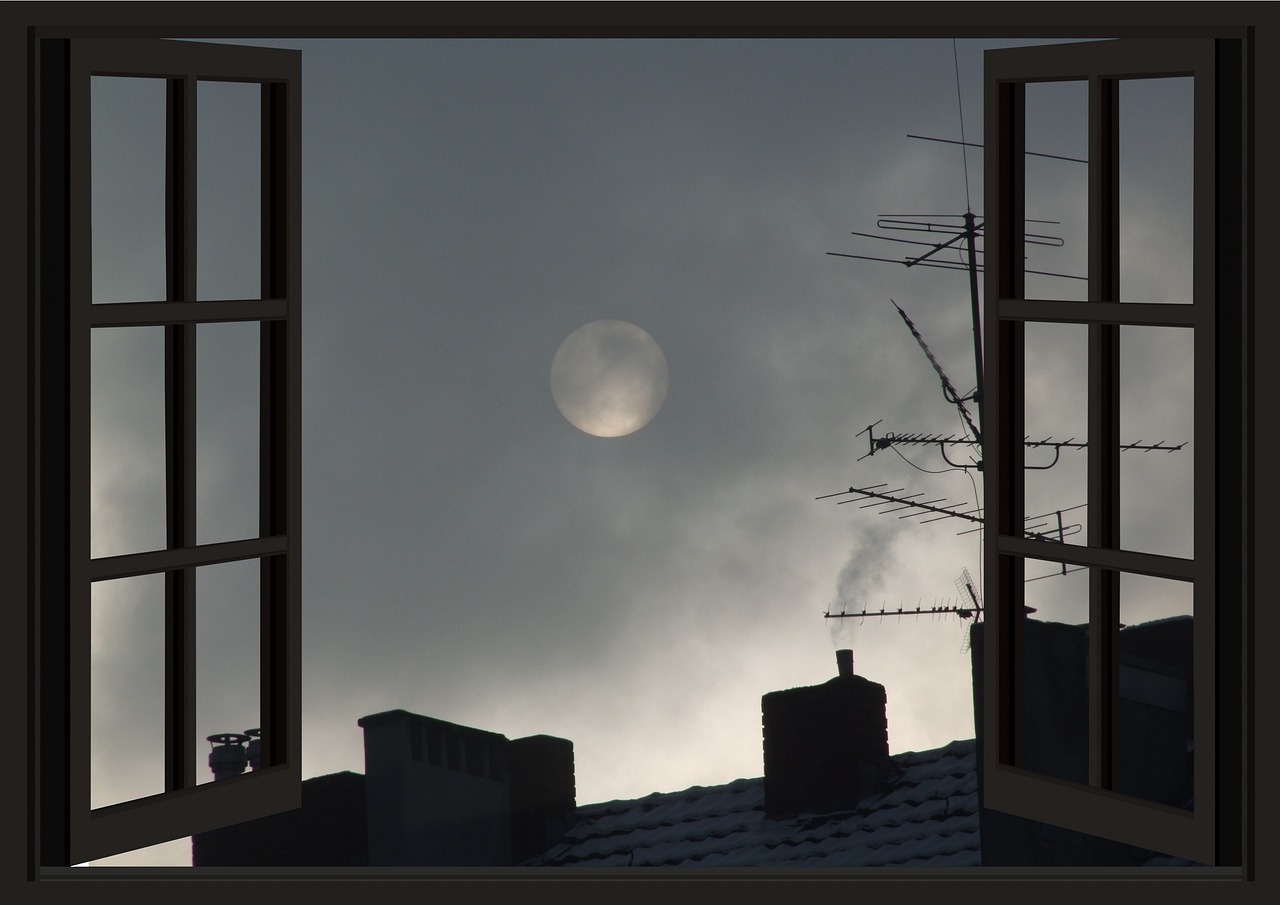
Block Out the Sun
Direct sunlight can quickly turn your home into an oven. To combat this, employ strategies to block out the sun’s heat:
Direct sunlight streaming into your home during a scorching summer day can transform your living space into an unbearable oven, sending your cooling bills soaring. To maintain a comfortable indoor environment and save on energy costs, it’s essential to deploy effective strategies that block out the sun’s relentless heat. Here are some proven methods to help you beat the heat and create a cool, inviting home:
Window Coverings: Invest in high-quality window coverings such as blinds, shades, curtains or drapes. These not only offer shade but also act as insulation, preventing solar heat from penetrating your home. Choose light-colored and reflective window treatments to bounce sunlight away.
Solar Screens: Exterior solar screens or sunshades are designed to block solar heat while still allowing natural light to filter through. Installing them on the outside of windows can significantly reduce heat gain and keep your home cooler.
Window Films: Apply window films, also known as window tinting, to your windows. These films come in various tints and can significantly reduce heat and glare while allowing daylight to illuminate your space. Low-emissivity (low-E) films are particularly effective at blocking heat.
Awnings: Awnings are a classic way to provide shade for windows and outdoor areas. Available in various styles and materials, they offer a stylish solution to block direct sunlight and prevent indoor temperatures from soaring.
Exterior Shade Structures: Enhance your outdoor spaces with shade structures like pergolas, gazebos or shade sails. These not only create inviting outdoor retreats but also block intense sunlight from reaching your home’s interior.
Landscaping: Planting strategically placed shade trees around your property can provide long-term relief from the sun’s heat. Trees not only offer natural shade but also improve the overall aesthetics of your surroundings.
Insulation: Ensure that your home is well-insulated to maintain stable indoor temperatures. Adequate insulation can help prevent heat infiltration, reducing your reliance on air conditioning.
Smart Thermostats: Install a smart thermostat that can adjust your cooling system based on the sun’s position and outdoor temperatures. These devices optimize cooling efficiency, saving both energy and money.
Cross-Ventilation: Promote cross-ventilation by opening windows and doors strategically during cooler parts of the day, such as early morning or evening. This allows fresh air to circulate and aids in natural cooling.
By employing these effective strategies to block out the sun’s heat, you can create a more comfortable indoor environment while also lowering your energy bills. These measures not only help you combat the heat but also contribute to a more sustainable and energy-efficient home, all while ensuring that your space remains a welcoming oasis, even on the hottest days.
If you’d like to dive deeper into this subject, there’s more to discover on this page: How To Keep Car Cool Without AC | Storables
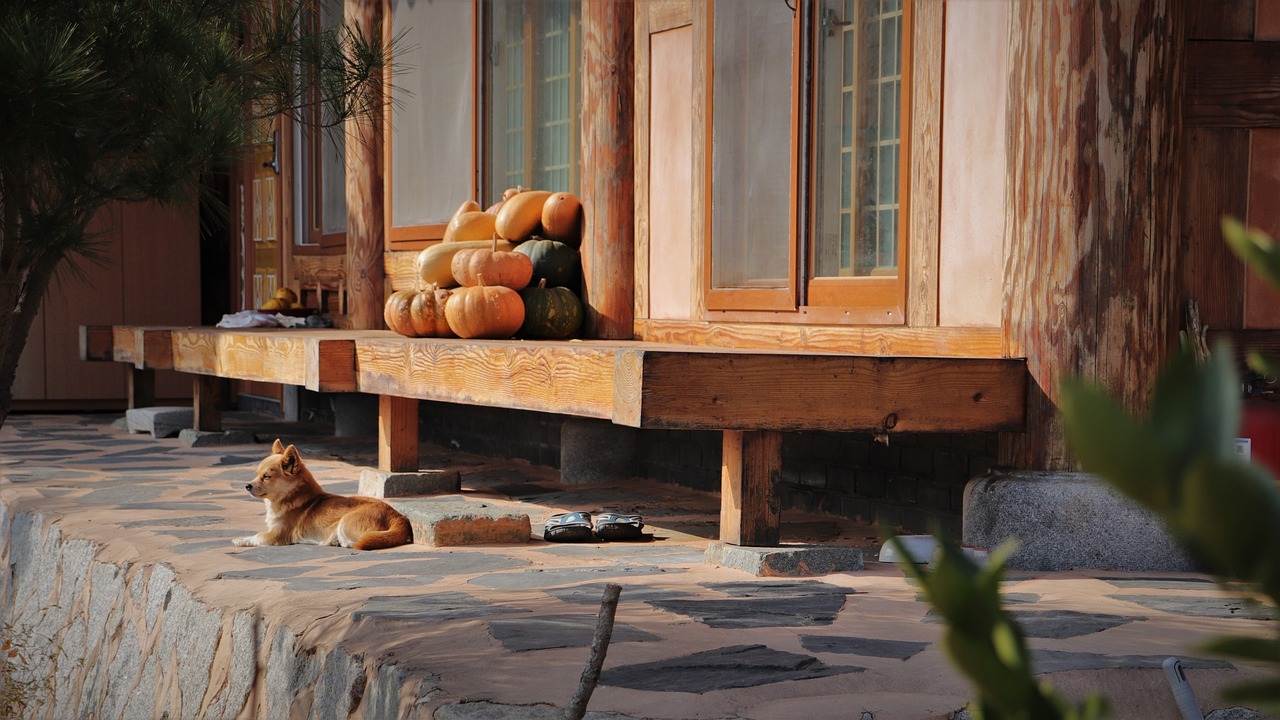
Curtains and Blinds
Invest in thermal curtains or blinds designed to block heat. Keep them closed during the hottest parts of the day.
“Investing in thermal curtains or blinds specifically engineered to block heat is a proactive and eco-friendly approach to enhancing your home’s comfort while reducing energy consumption. These specialized window treatments are designed to act as a formidable barrier against the sun’s relentless heat, offering a range of benefits that go beyond just temperature control. Here’s why they are an invaluable addition to your home:
Superior Heat Resistance: Thermal curtains or blinds are crafted from materials with exceptional heat-blocking properties. These materials are chosen for their high reflectivity and insulation capabilities, effectively preventing the outdoor heat from infiltrating your indoor spaces. By keeping them closed during the hottest parts of the day, you can significantly reduce the indoor temperature, lessening the burden on your air conditioning system.
Energy Savings: A cooler indoor environment translates to less reliance on air conditioning, leading to lower energy consumption and subsequently reduced utility bills. Investing in thermal window treatments is not just an investment in your home’s comfort but also a smart financial decision that pays off over time.
Preservation of Interior Furnishings: Prolonged exposure to direct sunlight can be detrimental to your furniture, carpets and flooring. Thermal curtains or blinds act as a protective shield, safeguarding your interior furnishings from fading and deterioration. This preservation not only maintains the visual appeal of your home but also saves you money on potential replacements or repairs.
Customized Daylight Control: While these window treatments excel at blocking heat, they can also be adjusted to control the amount of natural light entering your home. This gives you the flexibility to strike the perfect balance between heat reduction and maintaining a well-lit and inviting interior.
Privacy and Security: Many thermal window treatments offer enhanced privacy when closed, preventing prying eyes from peeking into your home. This added layer of privacy contributes to a sense of security and tranquility.
Year-Round Benefits: While thermal curtains or blinds are particularly effective in the summer, they also offer advantages throughout the year. During the winter, they provide insulation, helping to keep warm air inside your home and further contributing to energy efficiency.
Easy Installation and Aesthetic Appeal: These window treatments are typically straightforward to install and can be seamlessly integrated into a variety of interior design styles. Whether you prefer drapes, shades or blinds, you can find options that align with your aesthetic preferences.
In conclusion, investing in thermal curtains or blinds is a thoughtful and eco-conscious way to create a more comfortable and energy-efficient home. By taking this simple step, you can enjoy a cooler indoor environment, reduce energy costs, protect your belongings and enhance the overall quality of your living space. It’s an investment that not only enhances your daily life but also contributes to a more sustainable and environmentally responsible lifestyle.”
For a comprehensive look at this subject, we invite you to read more on this dedicated page: Keep Your Cool This Summer with Reusable Water Bottles – H2O …
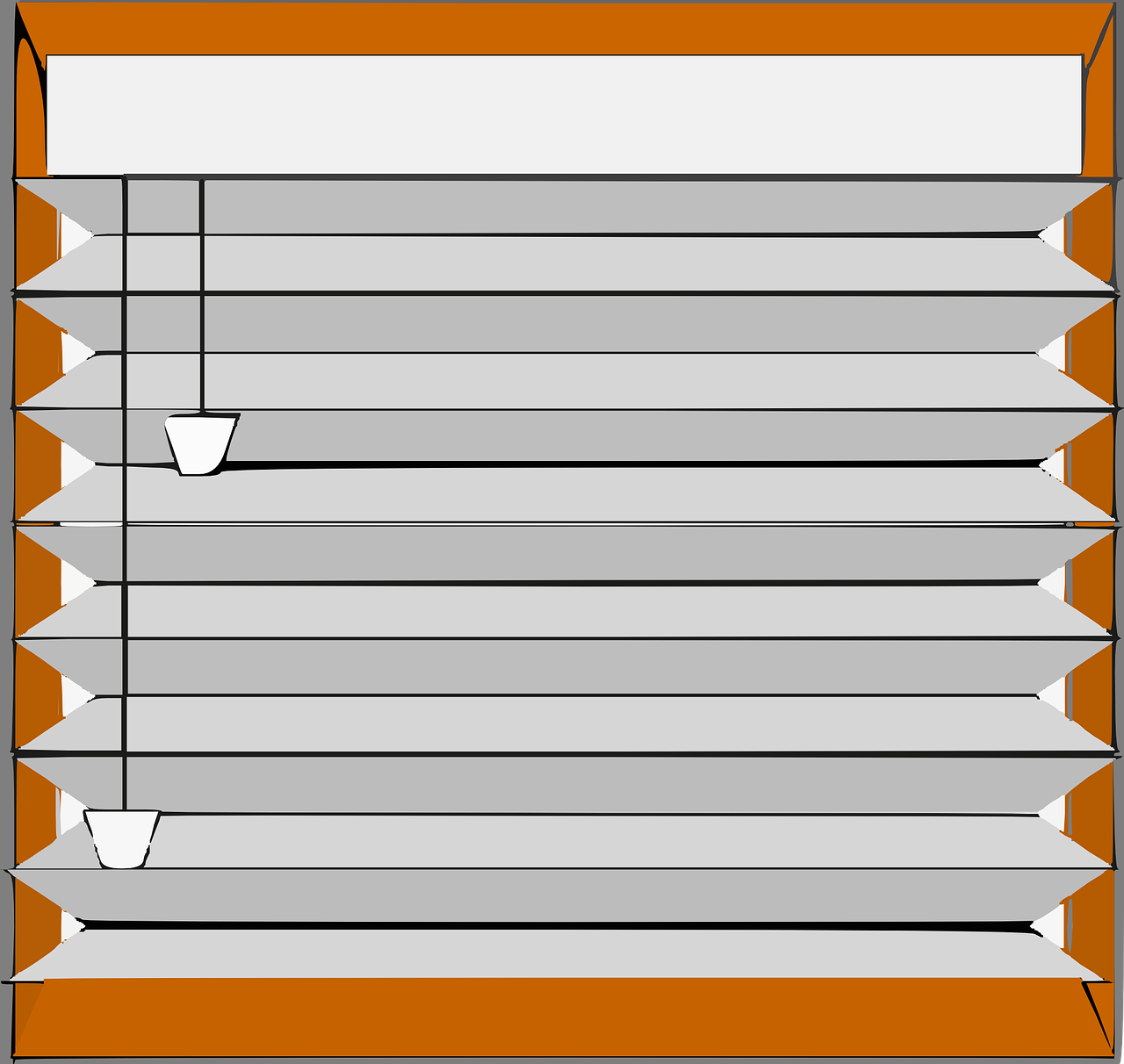
Window Films
Apply reflective window films to reduce solar heat gain while still allowing natural light to filter through.
The application of reflective window films is a clever and versatile strategy to improve the energy efficiency and overall comfort of your space. Expanding on this idea, let’s explore the multifaceted benefits of using these films in more detail:
Efficient Climate Control: Reflective window films act as a thermal barrier, reflecting a significant portion of incoming solar radiation. By doing so, they reduce the amount of heat that enters your space during hot, sunny days. This energy-efficient approach decreases the workload on your cooling system, resulting in lower energy consumption and reduced utility bills.
Sustainable Living: As we become increasingly conscious of environmental sustainability, reflective window films align with the goal of reducing our carbon footprint. By minimizing the need for air conditioning, these films contribute to a more eco-friendly lifestyle, helping to conserve energy and reduce greenhouse gas emissions.
Daylight Harvesting: Reflective films are designed to block heat while allowing natural light to pass through. This feature, known as daylight harvesting, not only brightens your space but also reduces the need for artificial lighting during the day. By harnessing natural light, you can create a well-lit and energy-efficient environment.
Glare Reduction: Glare from direct sunlight can be a nuisance, making it challenging to work, relax or watch screens comfortably. Reflective window films effectively reduce glare, enhancing your visual comfort. Whether you’re reading, working on a computer or simply enjoying the view, you’ll appreciate the glare-free atmosphere.
Privacy Enhancement: Reflective films provide daytime privacy by making it difficult for people outside to see into your space. This is particularly valuable for homes and offices located in close proximity to neighbors or busy streets. You can enjoy unobstructed views while maintaining your personal privacy.
UV Protection: Harmful UV rays from the sun can cause fading and damage to your interior furnishings, including furniture, flooring and artwork. Reflective window films offer UV protection by blocking a significant portion of these damaging rays, thus preserving the integrity and color of your belongings.
Quick and Non-Invasive Installation: Installing reflective window films is a straightforward and non-invasive process. It typically involves cleaning the window surface and applying the film using adhesive or static cling. This quick installation minimizes disruption to your daily routine and can often be completed in a matter of hours.
Variety of Options: Reflective films come in various shades and tints, allowing you to choose the level of solar heat reduction and privacy that suits your needs. Whether you prefer a nearly invisible film or a darker tint for enhanced privacy, there’s a wide range of options to cater to your preferences.
Cost Savings: Beyond the initial investment in window films, the potential for long-term cost savings is significant. Reduced energy consumption leads to lower cooling bills, making the installation of these films a financially prudent choice that can pay for itself over time.
In conclusion, applying reflective window films is a comprehensive and eco-conscious approach to improving the comfort, energy efficiency and functionality of your living or working space. It not only reduces solar heat gain and glare but also enhances privacy, preserves your belongings and contributes to a more sustainable and cost-effective lifestyle.
For additional details, consider exploring the related content available here How to Beat the Heat Without Central Air

Stay Hydrated and Cool
Personal comfort matters just as much as indoor temperature. To stay cool:
Acknowledging the significance of personal comfort in hot weather is crucial for maintaining overall well-being and enjoying a more pleasant and productive day. Here are some practical tips on how to stay cool and prioritize personal comfort during warm days:
**1. Stay Hydrated: One of the most effective ways to stay cool is by staying well-hydrated. Drink plenty of water throughout the day to prevent dehydration, which can lead to discomfort, fatigue and heat-related illnesses. You can also enjoy hydrating beverages like iced herbal teas, coconut water or infused water with slices of cucumber or citrus fruits.
**2. Wear Lightweight Clothing: Choose loose-fitting, lightweight and breathable clothing made from natural materials like cotton or linen. Light-colored clothing reflects sunlight and helps keep your body temperature down.
**3. Use Cooling Accessories: Consider using cooling accessories like a handheld fan, a cooling towel or a personal misting device. These items can provide instant relief when you’re on the go.
**4. Seek Shade: When outdoors, look for shaded areas to avoid direct sun exposure. Trees, umbrellas and awnings can provide relief from the sun’s heat. If you’re indoors, close curtains or blinds to block out direct sunlight.
**5. Take Cool Showers or Baths: A cool shower or bath can lower your body temperature and provide immediate relief from the heat. You can also keep a spray bottle filled with water in the refrigerator for a refreshing mist.
**6. Enjoy Cool Treats: Savor cool and refreshing treats like ice cream, frozen yogurt or fruit popsicles. These not only satisfy your sweet tooth but also help lower your body temperature.
**7. Use Fans Strategically: Electric fans can improve air circulation and make you feel cooler, even when the temperature is high. Place fans near open windows to create cross-ventilation or use them in conjunction with air conditioning to distribute cool air more effectively.
**8. Limit Outdoor Activities: During the hottest parts of the day, consider limiting strenuous outdoor activities. If you need to exercise or engage in physical tasks, schedule them during cooler morning or evening hours.
**9. Stay Informed: Monitor weather forecasts and be aware of heat advisories or warnings in your area. Stay informed about the expected temperatures and take appropriate precautions.
**10. Plan Outdoor Activities Wisely: If you have outdoor plans, try to schedule them near water sources like lakes, rivers or pools. Swimming or wading in cool water can provide instant relief from the heat.
**11. Stay Connected: Check in on friends, family members and neighbors, especially those who may be more vulnerable to extreme heat. Offer assistance and support as needed.
**12. Take Breaks: If you’re working or spending time outdoors, take regular breaks in shaded or air-conditioned areas. Use these breaks to rehydrate and cool down.
**13. Acclimatize: If you’re not used to hot weather, give your body time to acclimate. Gradually expose yourself to higher temperatures to build tolerance.
**14. Prioritize Rest: A well-rested body can better cope with heat. Ensure you get sufficient sleep during warm spells to help your body recover and recharge.
Remember that personal comfort is not just about physical well-being but also mental and emotional well-being. When you take steps to stay cool and comfortable, you’re better equipped to stay focused, maintain a positive mood and make the most of your day, even in the midst of high temperatures. Prioritizing personal comfort is an investment in your overall quality of life, especially during hot weather.
You can also read more about this here: Keep Your Cool in Hot Weather | Environmental Health Features

Stay Hydrated
Drink plenty of water to prevent overheating. Dehydration can make you feel warmer than you actually are.
Staying well-hydrated is not only essential for overall health but also plays a vital role in regulating your body’s temperature and preventing overheating. Here’s an in-depth exploration of why drinking plenty of water is crucial, especially in hot weather:
Internal Cooling: Your body uses a process called perspiration or sweating, as its natural cooling mechanism. When you’re adequately hydrated, your sweat glands produce sweat, which evaporates from your skin’s surface, taking excess heat with it. This process helps maintain your body temperature within a comfortable range.
Heat Dissipation: Water is essential for effective heat dissipation. It helps transport heat away from your core and towards your skin, where it can be released into the environment. Dehydration reduces your body’s ability to transfer heat, making you more susceptible to overheating.
Temperature Sensation: Dehydration can trick your body into feeling hotter than it actually is. When you’re dehydrated, your blood volume decreases, causing your body to conserve water by reducing blood flow to the skin’s surface. This reduced blood flow can give the sensation of increased heat, even if the ambient temperature hasn’t changed.
Preventing Heat-Related Illnesses: Proper hydration is your first line of defense against heat-related illnesses such as heat exhaustion and heatstroke. Dehydration increases the risk of these conditions, which can be life-threatening.
Maintaining Physical Performance: Whether you’re an athlete or just enjoying outdoor activities, staying hydrated is essential for maintaining physical performance. Dehydration can lead to muscle cramps, reduced endurance and impaired cognitive function, all of which can impact your ability to enjoy outdoor pursuits.
Electrolyte Balance: In hot conditions, you lose not only water but also electrolytes like sodium and potassium through sweating. These minerals play a crucial role in nerve and muscle function. Proper hydration helps maintain electrolyte balance, preventing muscle cramps and weakness.
Kidney Function: Adequate water intake supports your kidneys in filtering waste and toxins from your blood. Dehydration can stress your kidneys, potentially leading to kidney stones and other urinary tract issues.
Mental Alertness: Dehydration can impair cognitive function, leading to difficulty concentrating, memory problems and mood changes. Staying well-hydrated can help you stay mentally alert and focused.
Digestive Health: Water is essential for the proper functioning of your digestive system. It helps with the breakdown and absorption of nutrients and prevents issues like constipation.
Skin Health: Hydration also plays a role in maintaining healthy skin. Well-hydrated skin is more resilient and less prone to dryness, irritation and premature aging caused by sun exposure.
In conclusion, drinking plenty of water is not just about quenching your thirst; it’s a fundamental practice for maintaining your body’s temperature regulation, overall health and well-being, particularly in hot weather. Proper hydration is your best defense against overheating, heat-related illnesses and the discomfort associated with high temperatures. Make it a habit to sip water throughout the day to stay cool, comfortable and healthy.
You can also read more about this here: How To Keep Cats Cool Without AC | Storables

Use Fans
Ceiling fans and portable fans can create a cooling breeze. They help you feel more comfortable even when the room temperature is higher.
Ceiling fans and portable fans are simple yet incredibly effective tools for enhancing your comfort, especially when dealing with warmer indoor temperatures. These devices don’t actually lower the ambient temperature in a room, but they work wonders in making you feel cooler and more comfortable.
When you turn on a ceiling fan or a portable fan, it sets the air in motion, creating a gentle breeze that promotes evaporative cooling. This breeze helps to speed up the process of sweat evaporation from your skin, which is your body’s natural way of cooling down. As a result, you feel cooler and more comfortable, even when the room temperature is higher.
The beauty of fans lies in their versatility. You can use them in conjunction with your air conditioning system to enhance its efficiency. By circulating the cool air more effectively, fans ensure that every corner of the room benefits from the refreshing airflow. This means you can potentially raise your thermostat setting a few degrees without sacrificing comfort, ultimately leading to energy savings and lower utility bills.
Ceiling fans, in particular, are noteworthy for their ability to serve both cooling and heating needs. Many modern ceiling fans come equipped with reversible settings, allowing them to operate in both summer and winter modes. In the summer, they create a downward airflow for cooling, while in the winter, they run in reverse to push warm air trapped near the ceiling back down into the living space, improving overall heating efficiency.
Portable fans offer flexibility, allowing you to move them to different areas of your home as needed. Whether you’re working in your home office, relaxing in the living room or sleeping in the bedroom, a well-placed portable fan can make a significant difference in how comfortable you feel.
In essence, fans are valuable tools for maintaining comfort in a cost-effective and energy-efficient manner. They provide a cooling breeze, reduce the reliance on air conditioning and contribute to a more sustainable and comfortable indoor environment. So, next time you’re trying to beat the heat, consider turning on a fan to enhance your comfort and keep your energy usage in check.
For additional details, consider exploring the related content available here How to beat the heat without hurting your budget – CSMonitor.com
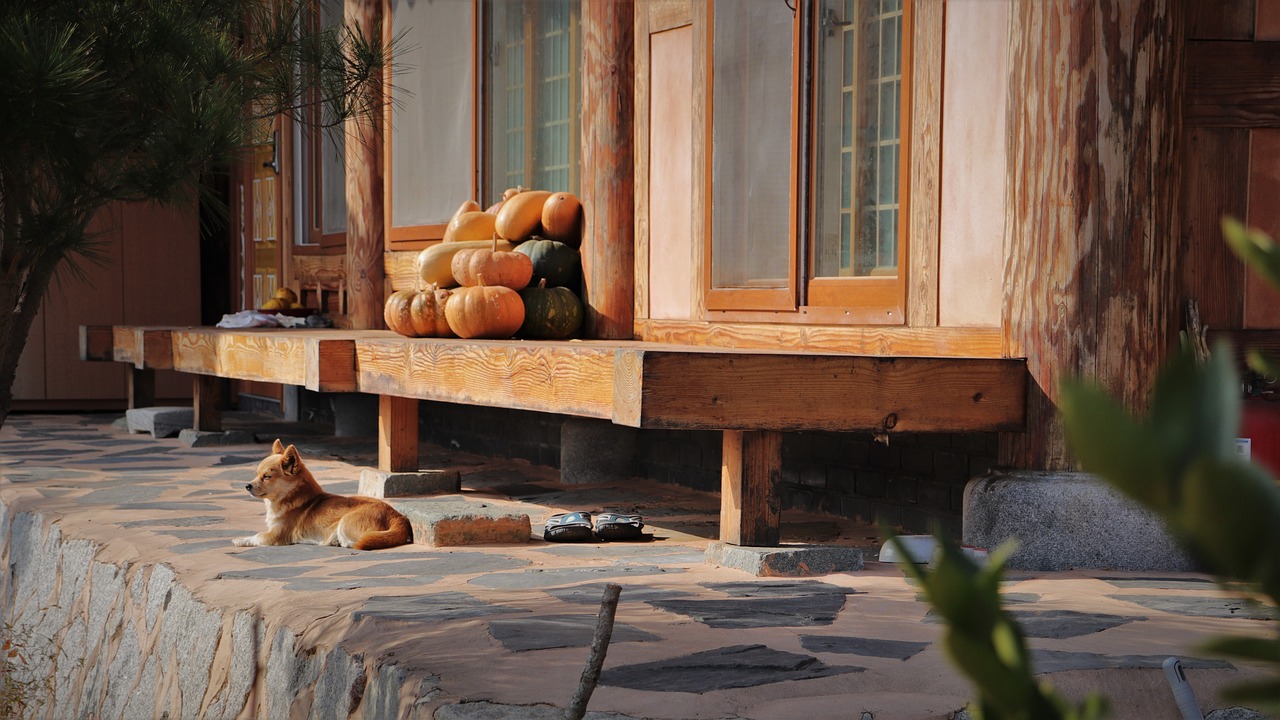
Embrace Energy-Efficient Cooking
Using your stove or oven on a hot day can significantly raise the indoor temperature. Opt for energy-efficient cooking methods:
Using your stove or oven on a hot day can indeed make your home feel uncomfortably warm and lead to increased energy consumption. Opting for energy-efficient cooking methods not only helps maintain a cooler indoor environment but also aligns with sustainable living practices. Here are some additional tips and ideas to consider:
Chilled and Refreshing Meals: Summer is the perfect season to explore chilled and no-cook meal options. Think of dishes like gazpacho (a cold tomato soup), ceviche (citrus-marinated seafood or vegetables) or cold pasta salads. These require minimal or no cooking and can be incredibly refreshing on hot days.
Batch Cooking: Plan your cooking sessions strategically to minimize heat generation. Consider batch cooking in the early morning or late evening when outdoor temperatures are cooler. Cook larger portions and store leftovers for future meals, reducing the need to cook every day.
Utilize Small Appliances: Small kitchen appliances like rice cookers, electric griddles and toaster ovens are energy-efficient alternatives to the stove and oven. They generate less heat and are ideal for preparing a variety of dishes, from stir-fries to breakfast items.
Pressure Cooking: Electric pressure cookers like the Instant Pot are versatile and energy-efficient. They cook food quickly and keep the heat contained, preventing it from radiating throughout your kitchen. Pressure cooking is perfect for tenderizing meats, cooking grains and preparing one-pot meals.
Solar Cooking: If you’re interested in sustainable cooking methods, consider solar ovens. These devices harness the power of the sun to cook food. Solar ovens are particularly effective on sunny days and can be used for baking, roasting and slow cooking.
Grilling with Efficiency: While grilling is an excellent choice for outdoor cooking, you can also grill efficiently. Use a lid on your grill to trap heat, reduce cooking time and maximize energy efficiency. Additionally, consider grilling vegetables and fruits to complement your meals.
Cooking with Lid On: When using stovetop pots and pans, cooking with a lid on helps retain heat and moisture, allowing you to use lower heat settings and shorter cooking times. This not only conserves energy but also prevents unnecessary heat emission.
Choose Energy-Efficient Appliances: If you’re in the market for new kitchen appliances, look for those with high energy-efficiency ratings. Modern appliances are designed to be more energy-efficient, which can significantly reduce energy consumption over time.
By incorporating these energy-efficient cooking methods into your culinary routine, you can create a cooler, more comfortable indoor environment during hot weather while reducing your overall energy use. These practices not only benefit your comfort and wallet but also contribute to a greener and more sustainable lifestyle.
Additionally, you can find further information on this topic by visiting this page: Chapter 5: Increasing Efficiency of Building Systems and Technologies
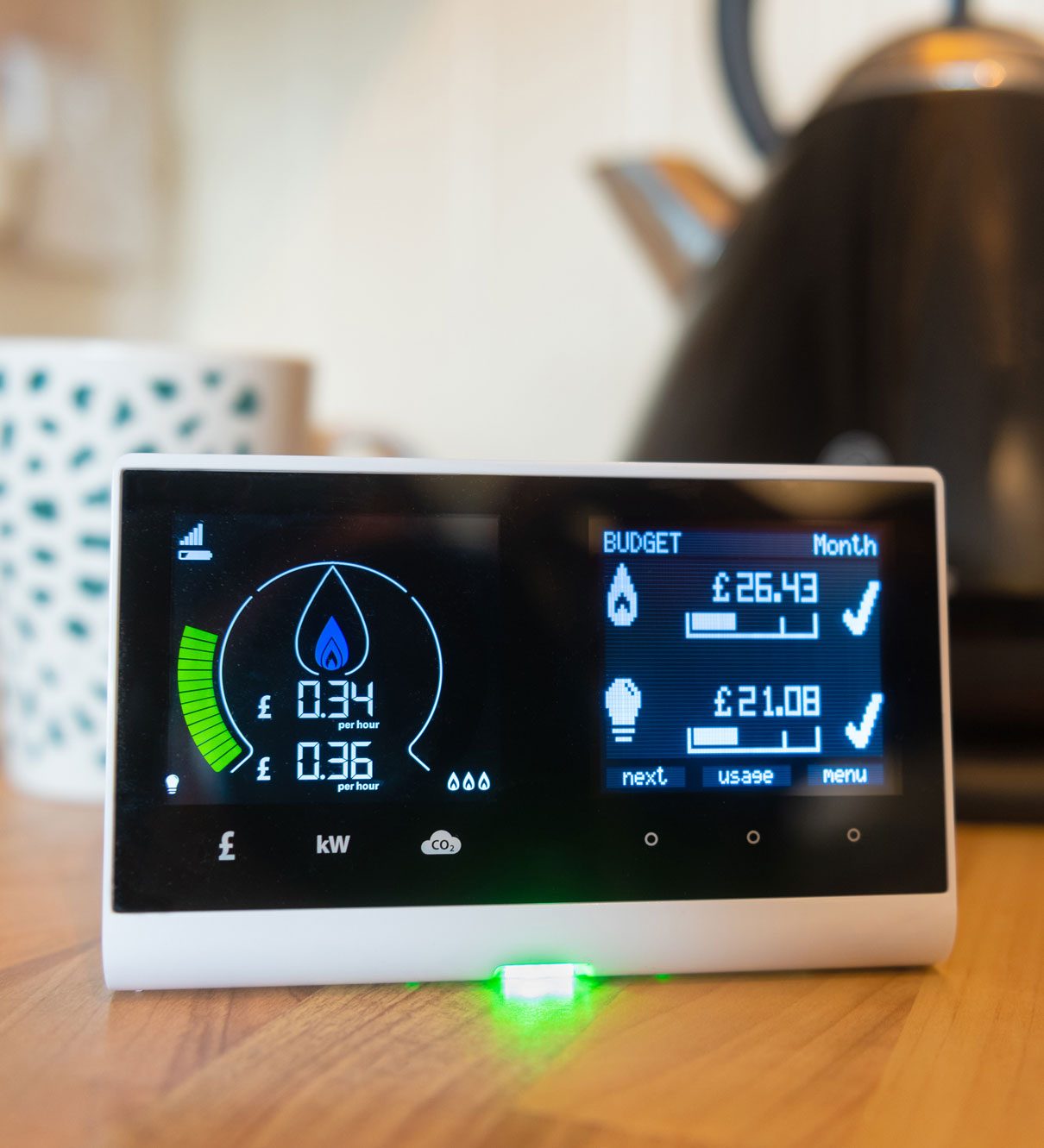
Grilling
Cook outside on the grill to keep the heat outdoors.
Embracing outdoor grilling as a cooking method offers numerous advantages, making it a smart choice not only during the warm months but year-round. The idea of cooking outside on the grill extends beyond mere culinary convenience; it encompasses a lifestyle that enhances your overall well-being and contributes to sustainability:
Temperature Control: Grilling allows you to have precise control over the cooking temperature. By adjusting the heat source or moving food to different parts of the grill, you can achieve the desired level of doneness and flavor. This level of control ensures that your dishes are cooked to perfection, enhancing your culinary skills and the quality of your meals.
Healthier Cooking: Grilling is often associated with healthier cooking, as it requires less added fats or oils compared to some indoor cooking methods. Excess fats from meats, for instance, drip away during grilling, resulting in leaner and healthier dishes. Additionally, grilling vegetables and fruits enhances their natural flavors and nutritional value.
Versatility: Grills come in various types, from gas and charcoal to electric and wood pellet grills, each offering its unique advantages. This diversity allows you to explore a wide range of cooking techniques, from slow smoking and roasting to searing and direct grilling. The versatility of grilling expands your culinary repertoire and encourages culinary creativity.
Outdoor Experience: Cooking outdoors on the grill is more than just a cooking method; it’s an experience. It allows you to immerse yourself in the sights, sounds and scents of the outdoors while preparing meals. This connection with nature and the changing seasons can enhance your enjoyment of food and the overall dining experience.
Eco-Friendly Choice: Grilling is often considered an eco-friendly cooking option. It typically requires less energy compared to indoor ovens and stovetops, reducing your carbon footprint. Additionally, using sustainable charcoal or wood pellets can further enhance the eco-friendliness of grilling.
Social Interaction: Grilling is a social activity that brings people together. Whether you’re hosting a backyard barbecue, a family dinner or a neighborhood get-together, grilling fosters social interaction and strengthens relationships. It’s an opportunity to bond over shared meals and create lasting memories.
Minimal Cleanup: Grilling generally results in fewer dishes and less cleanup compared to indoor cooking. With fewer pots and pans to wash, you can spend more time enjoying your meal and less time on kitchen chores.
Endless Possibilities: The world of grilling offers endless possibilities for experimentation and culinary exploration. From classic burgers and steaks to artisan pizzas and smoked dishes, you can continuously discover new flavors, techniques and recipes.
In conclusion, cooking outside on the grill transcends its practicality and becomes a lifestyle choice that enriches your culinary experiences and well-being. Whether you’re savoring the simplicity of a grilled burger or delving into the complexity of smoked barbecue, grilling offers a dynamic and enjoyable way to prepare food, connect with loved ones and embrace the outdoors. It’s a choice that not only keeps the heat outdoors but also brings warmth, flavor and fulfillment to your dining table.
Explore this link for a more extensive examination of the topic: How to beat the heat without hurting your budget – CSMonitor.com
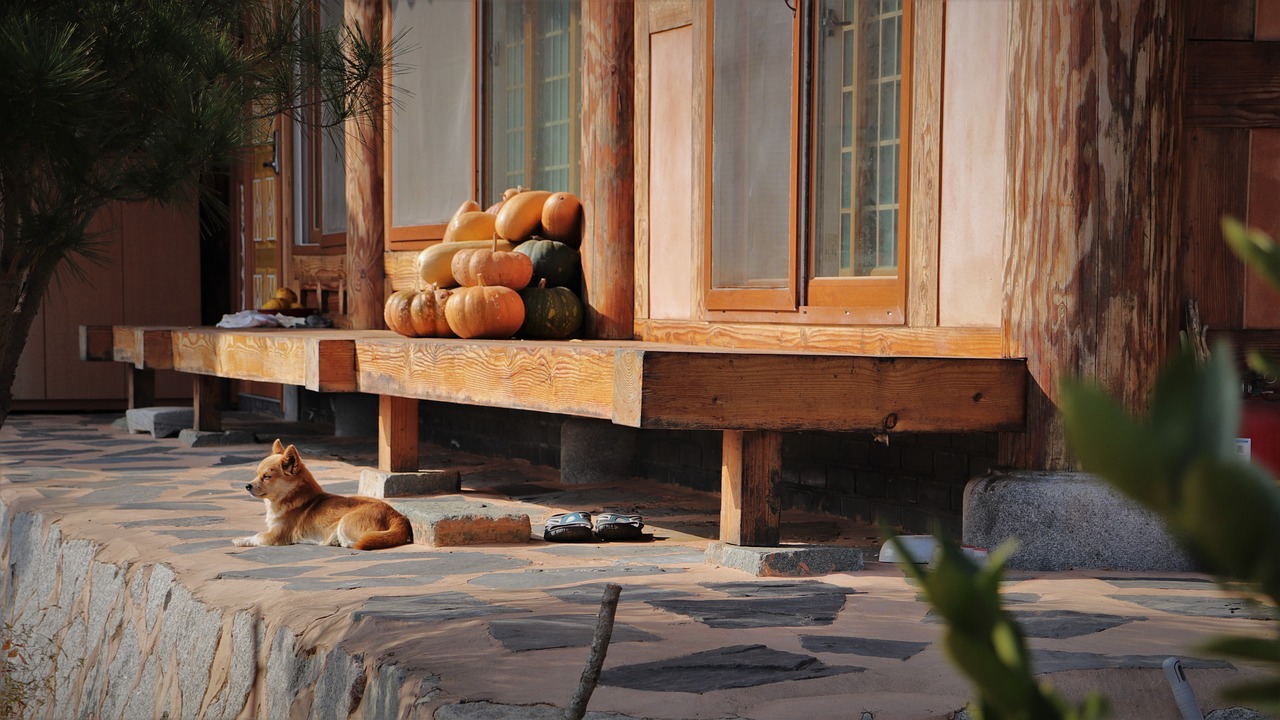
Microwave or Slow Cooker
Use appliances like the microwave or slow cooker that produce less heat compared to stovetops and ovens.
“Use appliances like the microwave or slow cooker that produce less heat compared to stovetops and ovens. This thoughtful approach to cooking not only keeps your kitchen cooler, but it also offers a range of advantages for your comfort, energy efficiency and culinary creativity:
Cooler Kitchen: During scorching summer days, keeping your kitchen as cool as possible is essential. Microwaves and slow cookers generate significantly less heat compared to traditional stovetops and ovens, helping you maintain a comfortable indoor temperature.
Energy Efficiency: These appliances are generally more energy-efficient. Microwaves use electromagnetic waves to heat food, while slow cookers use low, steady heat over an extended period. Both methods consume less electricity than conventional cooking, leading to potential energy savings.
Time-Saving: Microwaves are known for their speed and convenience. They can quickly heat or reheat meals, making them ideal for individuals or families with busy schedules. You can enjoy hot food without the time and effort required for stovetop cooking.
Nutrient Preservation: Microwaves and slow cookers often retain more nutrients in your food compared to other cooking methods. Their shorter cooking times and limited use of water help preserve vitamins and minerals, ensuring that your dishes are as nutritious as they are delicious.
Versatility: These appliances are versatile in their capabilities. Microwaves can defrost, reheat and cook a variety of dishes, from simple reheating to more complex recipes. Slow cookers excel at making hearty stews, soups, tender meats and flavorful one-pot meals.
Reduced Kitchen Cleanup: Cooking with microwaves and slow cookers often means fewer pots and pans to wash. Many microwave-safe containers and slow cooker liners are available, simplifying the cleanup process.
Bulk Cooking: Slow cookers, in particular, are great for preparing large batches of food. You can make enough to enjoy leftovers for future meals, reducing the need for daily cooking and saving time.
Environmentally Friendly: During peak electricity demand periods or when aiming to reduce your carbon footprint, choosing energy-efficient appliances like microwaves and slow cookers aligns with environmentally friendly practices, helping conserve energy and reduce emissions.
User-Friendly: Microwaves and slow cookers are generally safe and user-friendly, making them suitable for individuals of all cooking levels, including those with busy lifestyles or limited cooking experience.
Creativity in the Kitchen: Experimenting with microwave and slow cooker recipes can spark culinary creativity. You can explore a wide range of dishes, from quick microwave meals to rich, flavorful slow-cooked creations, expanding your cooking repertoire.
Fire Safety: Using appliances like the microwave reduces the risk of kitchen fires associated with open flames or hot stovetop surfaces, providing added safety in the kitchen.
By incorporating microwaves and slow cookers into your cooking routine, you not only manage heat during warm weather but also enjoy the many benefits they offer year-round. Whether you’re seeking convenience, energy savings or the preservation of nutrients, these appliances provide practical solutions for modern cooking while keeping your kitchen comfortably cool.”
To delve further into this matter, we encourage you to check out the additional resources provided here: IN THE LOOP, A Reference Guide to American English Idioms
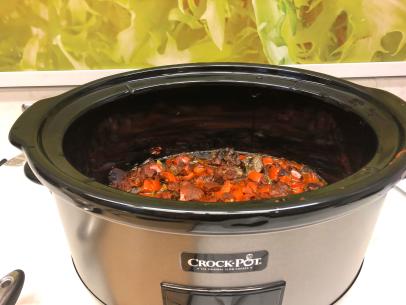
Limit Heat-Producing Activities
Certain activities can generate additional heat inside your home. Be mindful of when you engage in these:
Being mindful of activities that can generate additional heat inside your home is a key aspect of maintaining comfort and energy efficiency. It’s not just about timing; it’s also about adopting strategies to mitigate the heat produced and make your living space more comfortable and eco-friendly. Here’s an extended perspective on this important practice:
1. Baking and Cooking: While cooking is a daily necessity, you can reduce the heat generated by using energy-efficient appliances, like induction cooktops or microwaves, which produce less residual heat. Alternatively, plan meals that require less cooking time or opt for outdoor grilling during the warmer months. Using lids on pots and pans can also trap heat and cook food faster.
2. Appliances: Many appliances, such as refrigerators and freezers, can produce heat when they operate. Ensure these appliances are well-ventilated and properly maintained to minimize excess heat generation. Additionally, consider replacing older, less energy-efficient models with newer, more eco-friendly options.
3. Showering: Long, hot showers can increase humidity and heat in your bathroom. To reduce this impact, install low-flow showerheads that use less hot water, shorten your shower time or consider taking slightly cooler showers. Proper bathroom ventilation can help remove heat and moisture effectively.
4. Heating Devices: Some heating devices, like space heaters, can be sources of excess heat. Use them sparingly and only when necessary. Ensure they are positioned away from curtains, furniture and other flammable materials and turn them off when leaving the room.
5. Home Office Equipment: Computers, printers and other office equipment can generate heat when running for extended periods. To manage this, optimize your computer’s energy settings to reduce power consumption and consider using a laptop instead of a desktop computer, as they generate less heat. Proper cable management and good airflow around your equipment can also help dissipate heat.
6. Sunlight: Direct sunlight entering your home through windows can significantly raise indoor temperatures. Consider installing heat-reflective window films or shades to block or diffuse sunlight. Thermal curtains can also help insulate your windows, reducing the heat transfer.
7. Landscaping: Strategically planting trees or installing shading devices outside your windows can provide natural shade, reducing the amount of heat that enters your home. Deciduous trees that shed their leaves in the winter can offer shade in the summer and allow sunlight through in the winter.
8. Home Insulation: Adequate insulation in your home can help maintain a stable indoor temperature. Properly insulating your home reduces the need for heating and cooling, which, in turn, reduces the heat generated by your HVAC system.
By being mindful of when and how you engage in these heat-generating activities, you can optimize your living space for comfort and energy efficiency. These strategies not only make your home more enjoyable but also contribute to a greener and more sustainable lifestyle, reducing energy consumption and environmental impact.
Explore this link for a more extensive examination of the topic: What You Can Do to Reduce Heat Islands | US EPA

Cooking
Prepare meals during the cooler parts of the day or opt for no-cook recipes like salads.
Certainly, making thoughtful choices about meal preparation during hot weather can have numerous benefits for your well-being and overall comfort. Let’s explore this idea further:
Savor Seasonal Ingredients: Summer brings an abundance of fresh, seasonal produce, which can shine in no-cook dishes like salads. Embrace the opportunity to savor the flavors of ripe, juicy fruits and vegetables. Farmers’ markets and home gardens often offer a vibrant array of ingredients to inspire your culinary creations.
Nutritional Balance: No-cook meals can be incredibly nutritious. They allow you to enjoy foods in their natural state, preserving their vitamins, minerals and antioxidants. Salads, for example, provide a wide range of nutrients, making them a health-conscious choice.
Customization: No-cook recipes are highly customizable to suit individual preferences and dietary restrictions. Whether you’re vegetarian, vegan, gluten-free or have specific taste preferences, you can tailor no-cook meals to your liking with a wide variety of ingredients and dressings.
Hygienic and Safe: In warm weather, food safety is a critical concern. No-cook recipes often involve minimal handling and reduced risk of contamination, as they don’t require extended cooking times. This can give you peace of mind regarding food safety.
Minimal Cleanup: Preparing no-cook meals generally results in fewer dishes and less kitchen cleanup. This means you spend less time at the sink and more time enjoying your meal and the pleasant summer weather.
Portable Options: No-cook meals are often highly portable, making them ideal for picnics, outdoor gatherings or meals on the go. You can easily pack salads, wraps or chilled pasta dishes for a refreshing outdoor dining experience.
Cooking Break: Reducing cooking during hot weather can provide a break from the kitchen’s heat and humidity. This break allows you to relax and enjoy the summer season without the added stress of meal preparation.
Weight Management: No-cook recipes can be a helpful tool for weight management. Fresh, low-calorie ingredients can help you stay on track with your health and fitness goals, making it easier to maintain or achieve a healthy weight.
Culinary Creativity: Experimenting with no-cook recipes can ignite your culinary creativity. Mixing and matching ingredients, trying out new dressings or vinaigrettes and exploring different combinations of flavors can be a delightful and rewarding experience.
Family and Community Sharing: No-cook meals can foster a sense of sharing and community. Potluck-style gatherings or family get-togethers with each member contributing a no-cook dish can create a sense of togetherness and celebration.
In summary, the choice to prepare meals during cooler times of the day or opt for no-cook recipes like salads during hot weather extends beyond practicality. It’s an opportunity to celebrate the season’s bounty, promote good health, minimize kitchen heat and enjoy the simple pleasures of refreshing, flavorful and nutritious meals. Whether you’re enjoying a solo meal or sharing a picnic with loved ones, embracing no-cook options can make your summer dining experience truly enjoyable and satisfying.
If you’d like to dive deeper into this subject, there’s more to discover on this page: How to Cool Down Your Upstairs Apartment – Windmill Air

Appliance Use
Avoid running heat-generating appliances like clothes dryers and dishwashers during the hottest hours.
Steering clear of heat-generating appliances during the peak of summer heat is a practice that not only keeps your living spaces more comfortable but also aligns with energy conservation and sustainability goals. Here’s a deeper exploration of the benefits and ways to implement this idea:
Enhanced Comfort: High temperatures outside can already make your home feel warm. Operating heat-generating appliances like clothes dryers and dishwashers during the hottest hours only exacerbates the indoor heat, leading to discomfort. By postponing their use to cooler times, you create a more pleasant living environment for yourself and your family.
Energy Efficiency: When these appliances run, they release heat into your home. This extra heat increases the workload on your air conditioning system, causing it to work harder and consume more electricity to maintain a comfortable temperature. By using these appliances during cooler periods, your air conditioner doesn’t have to compensate for additional heat, resulting in energy savings.
Lower Utility Bills: Reduced energy consumption translates to lower utility bills. Operating heat-generating appliances during off-peak hours can help you cut down on electricity costs, leaving more money in your pocket.
Environmental Impact: Less energy consumption also means a smaller carbon footprint. By minimizing electricity use during peak demand hours, you contribute to a more sustainable and environmentally friendly energy grid.
Extended Appliance Lifespan: Excessive heat can affect the longevity of appliances. Running them during cooler times reduces the wear and tear on their internal components, potentially extending their lifespan and reducing the need for repairs or replacements.
Here’s how you can incorporate this practice into your routine:
Time-Based Scheduling: Plan your appliance use around the day’s temperature fluctuations. Typically, mornings and evenings are cooler, so schedule tasks like laundry and dishwashing during these times.
Programmable Appliances: If your appliances have delay-start or programmable features, use them to your advantage. Set your dishwasher or dryer to run during off-peak hours, allowing for a more energy-efficient operation.
Air Dry When Possible: For items that can air dry, skip the dryer altogether. Hang clothes on a drying rack or line and use the heat of the sun and air to dry them naturally. This not only saves energy but also reduces wear on your clothing.
Prioritize Full Loads: Wait until you have a full load before using your dishwasher or washing machine. This maximizes the efficiency of each cycle, reducing the number of times you need to run these appliances.
Energy-Efficient Models: Consider investing in energy-efficient appliances when it’s time to replace older ones. These models are designed to operate with less energy consumption.
By being mindful of when you use heat-generating appliances, you can create a more comfortable home environment, save on utility bills and contribute to a greener and more energy-efficient lifestyle. It’s a small adjustment that yields significant benefits for both you and the environment.
For a comprehensive look at this subject, we invite you to read more on this dedicated page: How to Ensure Your Air Conditioner Is Prepared for the Summer Heat
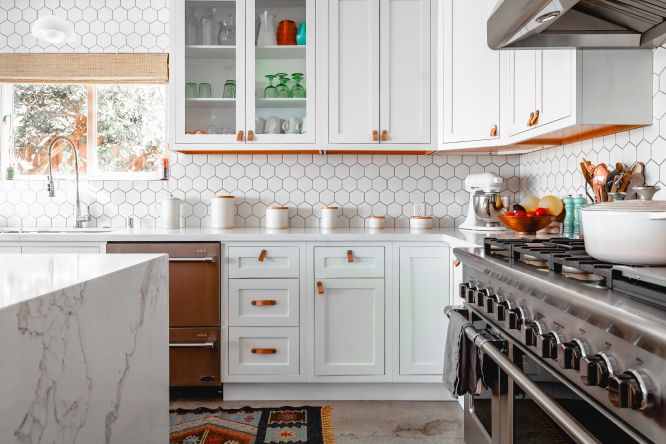
Optimize Your Ceiling Fans
Ceiling fans can be incredibly effective at cooling you down, but they need to be used correctly:
Ceiling fans can be incredibly effective at cooling you down, but they need to be used correctly to maximize their benefits and energy efficiency. Here are some key tips for making the most of your ceiling fans:
Adjust the Direction: Most ceiling fans have a reversible motor, allowing you to change the direction of the blades. During the summer, set your fan to rotate counterclockwise (or “forward”) at a higher speed. This creates a breeze that helps evaporate sweat from your skin, making you feel cooler.
Use in Conjunction with Air Conditioning: Ceiling fans are not meant to lower the temperature of a room; instead, they create a wind-chill effect that makes you feel cooler. To save on energy costs, use your ceiling fan in combination with your air conditioner. This allows you to set your thermostat a few degrees higher while still feeling comfortable.
Turn Off When You Leave: Ceiling fans cool people, not rooms. Remember to turn off the fan when you leave a room. Fans don’t actually lower the temperature; they just make you feel cooler by circulating air, so leaving them on in empty rooms is a waste of electricity.
Optimize Fan Speed: Adjust the fan speed according to your comfort level and the room size. In larger rooms, you may need a higher fan speed to circulate air effectively. Experiment with different settings to find the right balance between comfort and energy savings.
Clean and Maintain Regularly: Dust and dirt can accumulate on the blades, affecting the fan’s efficiency. Clean the blades periodically to ensure smooth operation. Additionally, check for any wobbling or unusual noises, as these could indicate a need for maintenance.
Install Fans in Strategic Locations: Consider installing ceiling fans in rooms where you spend the most time, such as the living room and bedrooms. Proper placement can help you rely less on air conditioning and reduce your overall cooling costs.
Consider Energy-Efficient Models: When purchasing a new ceiling fan, look for models that are ENERGY STAR certified. These fans meet strict energy efficiency standards and can save you money in the long run.
Use Fans Year-Round: Ceiling fans can also be used in the winter to help distribute warm air more evenly throughout a room. Simply reverse the fan’s direction to clockwise (or “reverse”) at a low speed to gently push warm air downward.
Combine with Window Treatments: Using ceiling fans in conjunction with window treatments like blinds or curtains can further improve energy efficiency. During the hottest part of the day, close curtains to block out direct sunlight and heat and use the ceiling fan to maintain a comfortable temperature.
By following these guidelines and using your ceiling fan strategically, you can enjoy a cooler and more comfortable living environment while also reducing your energy consumption and utility bills. Ceiling fans are a cost-effective and eco-friendly way to beat the heat, provided you use them wisely.
Should you desire more in-depth information, it’s available for your perusal on this page: Here’s How to Use Air Conditioner Effectively & Economically

Fan Direction
In the summer, set your ceiling fans to rotate counterclockwise to create a cooling breeze. This can help you raise the thermostat temperature without sacrificing comfort.
In the scorching heat of summer, setting your ceiling fans to rotate counterclockwise is a clever strategy for enhancing your indoor comfort while reducing energy consumption. Here’s how this simple adjustment can make a significant difference in your cooling efforts:
Enhanced Cooling Effect: When your ceiling fans rotate counterclockwise during the summer, they create a noticeable cooling breeze in the room. This breeze mimics the sensation of natural wind, helping to dissipate the heat from your body and making you feel cooler.
Thermostat Optimization: The cooling breeze generated by counterclockwise fan rotation has a practical advantage – it allows you to raise the thermostat temperature without sacrificing comfort. As a result, your air conditioning system doesn’t need to work as hard or run as frequently, resulting in substantial energy savings.
Energy Efficiency: By raising your thermostat a few degrees and relying on ceiling fans for additional comfort, you can significantly reduce your energy consumption and lower your electricity bills. This eco-friendly approach contributes to a smaller carbon footprint and supports sustainable living.
Consistent Temperature Distribution: Ceiling fans also help distribute cool air more evenly throughout the room. They prevent hot spots and temperature variations, ensuring that everyone in the space enjoys a consistent level of comfort.
Year-Round Utility: Ceiling fans are versatile and not limited to summer use. Many models come with a reverse setting for winter. By switching the rotation to clockwise, fans can gently circulate warm air that rises to the ceiling, effectively distributing it throughout the room and reducing the need for additional heating.
Cost Savings: Utilizing ceiling fans is a cost-effective method for maintaining a comfortable indoor environment. It’s a budget-friendly way to stay cool and reduce your reliance on air conditioning, saving you money in the long run.
Sustainable Living: Conserving energy by using ceiling fans aligns with eco-friendly living practices. It’s a small but impactful step toward reducing the environmental impact of excessive electricity consumption.
Improved Sleep Quality: Many people find the gentle, rhythmic sound of ceiling fans soothing, which can enhance sleep quality. A cooler, well-ventilated room can also promote more restful sleep during hot summer nights.
Easy Installation: Ceiling fans are relatively easy to install and they come in a wide range of styles and designs to complement your interior decor. They not only serve a functional purpose but also add aesthetic appeal to your living space.
Quiet Comfort: Ceiling fans operate quietly, providing a peaceful and enjoyable atmosphere in your home. They’re ideal for maintaining a comfortable ambiance without disruptive noise.
In summary, adjusting your ceiling fans to rotate counterclockwise during the summer is a cost-effective and eco-conscious way to enhance your indoor comfort while reducing energy consumption. It’s a simple lifestyle change that allows you to enjoy a more sustainable and cost-efficient cooling solution, making those sweltering summer days more bearable for you and the environment.
If you’d like to dive deeper into this subject, there’s more to discover on this page: 14 Eco-Friendly Ways to Keep Your House Cool This Summer | Eco …
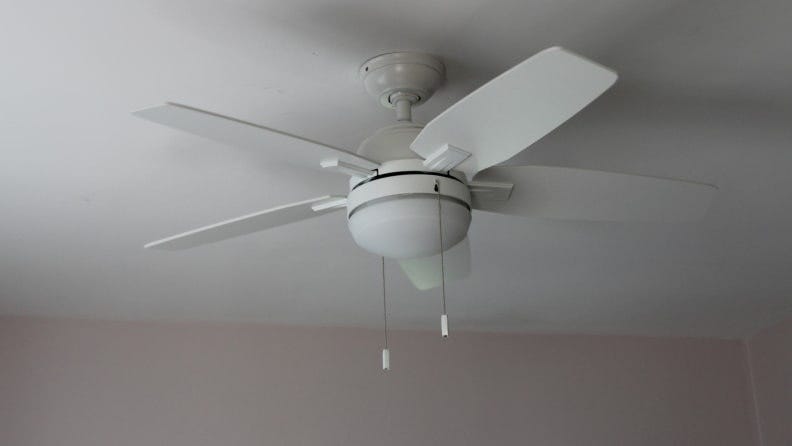
Create a Cooling Oasis
Designate a cool, comfortable space in your home where you can retreat during the hottest parts of the day. Fill it with items like ice packs, cold beverages and comfortable seating to enhance your comfort.
Designating a cool, comfortable retreat within your home during scorching summer days is a wise and proactive strategy that not only provides respite from the heat but also contributes to your overall well-being. Here’s how you can make your designated cool space even more inviting and functional:
Strategic Location: Choose a room or area in your home that naturally stays cooler or can be easily shaded from the sun during the hottest parts of the day. North-facing rooms or spaces with well-insulated walls and windows are often ideal choices.
Efficient Cooling: Consider placing a fan or a portable air conditioner in your designated space to maintain a comfortable temperature. These appliances can significantly enhance the coolness and comfort of your retreat.
Comfortable Seating: Invest in comfortable seating options like cushioned chairs, chaise lounges or even a hammock. Ensure that the furniture is designed for relaxation, so you can fully unwind and enjoy your cool oasis.
Shade and Curtains: Install window coverings or curtains that can block out direct sunlight when needed. This helps maintain a comfortable indoor temperature and reduces glare, making your retreat more relaxing.
Hydration Station: Keep a mini refrigerator or cooler stocked with cold beverages such as water, iced tea or your favorite chilled drinks. Staying hydrated is essential for maintaining comfort in the heat.
Healthy Snacks: Consider having a small snack station with fresh fruits, yogurt and other healthy snacks readily available. These refreshments can help keep your energy levels up and provide essential nutrients.
Entertainment: Bring in entertainment options like a portable TV, a tablet or a good book. This allows you to pass the time comfortably, whether you prefer watching shows, reading or catching up on work.
Lighting: Opt for soft, cool-toned lighting to create a calming atmosphere. Dimmable or color-changing LED lights can add ambiance and set the mood for relaxation.
Aromatherapy: Use essential oil diffusers or scented candles to infuse the space with calming aromas like lavender or eucalyptus. Aromatherapy can enhance your relaxation and help reduce stress.
Tech-Free Zone: Consider making your cool retreat a tech-free zone, encouraging you to disconnect from screens and digital devices. This promotes mindfulness and relaxation.
Plants: Incorporate indoor plants into your space. Not only do they add a touch of nature, but they also help improve indoor air quality by filtering out pollutants and increasing humidity.
Personal Touches: Decorate your retreat with personal touches like artwork, photos or decorative cushions. This makes the space feel more inviting and tailored to your preferences.
Privacy: If possible, ensure your retreat offers privacy from the rest of the household. This allows you to fully unwind and escape from daily distractions.
By thoughtfully curating your designated cool space with these enhancements, you can transform it into a serene oasis that not only provides relief from the heat but also promotes relaxation and well-being. It becomes a sanctuary where you can escape the sweltering temperatures, recharge and enjoy moments of peace and comfort during the hottest parts of the day.
For additional details, consider exploring the related content available here Here’s How to Use Air Conditioner Effectively & Economically

Beating the heat without overusing AC is not only cost-effective but also environmentally responsible. By implementing these strategies, you can enjoy a cool and comfortable summer while reducing your energy consumption and environmental impact. Whether you’re looking to lower your energy bills or simply embrace a more sustainable lifestyle, these tips will help you stay cool while staying green. So, this summer, consider these alternatives to AC and you’ll discover that comfort and sustainability can go hand in hand.
Embracing alternatives to air conditioning not only offers cost-effective cooling solutions but also aligns with eco-conscious living. By implementing these strategies, you can relish a cool and comfortable summer while simultaneously reducing your energy consumption and environmental footprint. Whether your motivation is to lower utility bills, minimize your carbon footprint or simply adopt a more sustainable lifestyle, these tips allow you to stay cool while staying green. This summer, consider these eco-friendly alternatives to air conditioning and you’ll find that comfort and sustainability can seamlessly coexist.
Natural Ventilation: Harness the power of natural ventilation by strategically opening windows to promote cross-ventilation. This encourages a refreshing breeze to flow through your home, providing natural cooling during temperate evenings.
Ceiling Fans: Install ceiling fans in key living spaces to enhance airflow and create a cooling effect. Ceiling fans are energy-efficient and provide a cost-effective means of staying comfortable without relying on AC.
Shade and Curtains: Utilize window coverings, such as blinds and curtains, to block out direct sunlight during the hottest parts of the day. This helps maintain a cooler indoor temperature by reducing solar heat gain.
Cooling Strategies: Explore traditional cooling methods like applying damp towels or using a handheld fan for a quick and refreshing cool-down when needed.
Smart Thermostats: If you have an air conditioning system, invest in a smart thermostat to optimize its operation. Program it to increase the temperature when you’re away and lower it when you’re at home, ensuring energy efficiency.
Energy-Efficient Appliances: Replace older, energy-draining appliances with energy-efficient models. These appliances generate less heat, reducing the need for additional cooling.
Shade Trees and Landscaping: Plant shade trees around your home to block direct sunlight. Well-placed landscaping can naturally cool your outdoor spaces, making them more enjoyable.
Cool Roofs: Consider cool roofing materials that reflect more sunlight and absorb less heat, reducing the amount of heat transferred into your home.
Thermal Mass: Use thermal mass materials like concrete or tile flooring to absorb and store coolness during the night, releasing it slowly during the day to maintain a stable indoor temperature.
Energy Audits: Schedule a home energy audit to identify areas where your home can be made more energy-efficient. Addressing insulation, sealing gaps and improving overall insulation can make a substantial difference in cooling needs.
Solar-Powered Ventilation: Solar-powered attic fans can help remove hot air from your home’s attic, reducing the heat that enters your living spaces.
Night Cooling: Take advantage of cooler nighttime temperatures by opening windows to allow the cool air in. Using box fans to promote air circulation can enhance the effectiveness of this nighttime cooling strategy.
By adopting these eco-friendly alternatives to air conditioning, you not only contribute to a more sustainable environment but also enjoy a more cost-effective and comfortable summer. It’s a win-win scenario that demonstrates that staying cool and being environmentally responsible are not mutually exclusive. This summer, make a commitment to beat the heat while staying green and you’ll find that your efforts have a positive impact on both your comfort and the planet.
For a comprehensive look at this subject, we invite you to read more on this dedicated page: Treating Drug Abuse and Addiction in the Criminal Justice System …
More links
To delve further into this matter, we encourage you to check out the additional resources provided here: How to beat the heat without hurting your budget – CSMonitor.com
